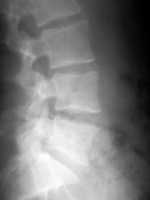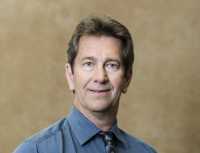
09 Jan Lumbar Spinal Stenosis: Non-Surgical Options Compared
MedicalResearch.com Interview with:

Dr. Schneider
Dr. Michael Schneider DC, PhD
Associate Professor
School of Health and Rehabilitation Sciences
University of Pittsburgh
MedicalResearch.com: What is the background for this study?
Response: Lumbar spinal stenosis (LSS) is one of the fastest growing problems in the country due to its aging population. One third of Medicare users have the condition, and it is the number one reason for spine surgery in this population. Existing research evaluates the benefits of nonsurgical treatment options compared to surgery, but there was no existing research that compared the available nonsurgical options to each other to determine the best course of treatment for each patient.
We studied three nonsurgical treatments for LSS: medical management with medications and/or epidural injections, individualized care with a physical therapist or chiropractor, and group exercise. We assessed each of these treatment methods with a questionnaire, a walking distance test, and a physical activity monitor.
MedicalResearch.com: What are the main findings?
Response: Walking was most responsive to the nonsurgical treatments. All three methods led to participants walking further at their two month follow-up, and that progress was sustained six months out. Those who saw a physical therapist or chiropractor saw more progress at the two month mark, meaning they were walking further in a shorter period of time than those who were treated with medication and group exercise. However, by six months, all participants had evened out and showed similar improvement in their ability to walk further distances.
MedicalResearch.com: What should readers take away from your report?
Response: This study is important because until this point, the notion in the existing literature is that LSS is a degenerative condition that will only get worse over time and that we cannot do anything to treat it aside from waiting for surgery or giving temporary relief with epidural injections. We have shown that all three of these nonsurgical techniques lead to people walking much further, reducing their top complaint related to LSS.
MedicalResearch.com: What recommendations do you have for future research as a result of this work?
Response: This is not a definitive study, but hopefully it is the first of many to examine nonsurgical treatments for LSS. We want to continue to expand on our knowledge of these treatments and suggest that primary care physicians offer them to their patients, so they know they have truly tried everything before proceeding with surgery.
MedicalResearch.com: Is there anything else you would like to add?
Response: This trial was one of first 25 clinical trials in the US funded by PCORI, and it was the first PCORI comparative effectiveness grant awarded to the University of Pittsburgh. The research was designed with patient input in an attempt to measure outcomes that are important to them. There are no disclosures to report.
Citation:
[wysija_form id=”3″]
[last-modified]
The information on MedicalResearch.com is provided for educational purposes only, and is in no way intended to diagnose, cure, or treat any medical or other condition. Always seek the advice of your physician or other qualified health and ask your doctor any questions you may have regarding a medical condition. In addition to all other limitations and disclaimers in this agreement, service provider and its third party providers disclaim any liability or loss in connection with the content provided on this website.
Last Updated on January 9, 2019 by Marie Benz MD FAAD
